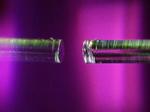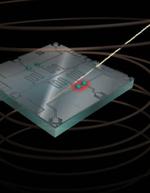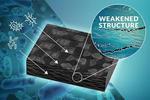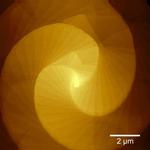Other

“Scientists at the University of Wisconsin–Madison have developed the most sensitive method yet for detecting and profiling a single molecule — unlocking a new tool that holds potential for better understanding how the building blocks of matter interact with each …

“In an advance they consider a breakthrough in computational chemistry research, University of Wisconsin–Madison chemical engineers have developed a model of how catalytic reactions work at the atomic scale. This understanding could allow engineers and chemists to develop more …
News UW–Madison researchers key in revealing neutrinos emanating from galactic neighbor with a gigantic black hole

“On Earth, billions of subatomic particles called neutrinos pass through us every second, but we never notice because they rarely interact with matter. Because of this, neutrinos can travel straight paths over vast distances unimpeded, carrying information about their cosmic …

“University of Wisconsin–Madison physicists have made one of the highest performance atomic clocks ever, they announced Feb. 16 in the journal Nature. Their instrument, known as an optical lattice atomic clock, can measure differences in time to a precision …

“Quantum computers could outperform classical computers at many tasks, but only if the errors that are an inevitable part of computational tasks are isolated rather than widespread events. Now, researchers at the University of Wisconsin–Madison have found evidence that …

“Polymer composites are durable, lightweight replacements for wood, metal or other materials and are used widely in everything from pipelines and utility poles to airplanes and cars. Research at the University of Wisconsin–Madison is shedding new light on how …

“Scientists at the University of Wisconsin–Madison have discovered a way to control the growth of twisting, microscopic spirals of materials just one atom thick. The continuously twisting stacks of two-dimensional materials built by a team led by UW–Madison …

“Researchers from Cornell and the University of Wisconsin–Madison have designed a wrist-mounted device and developed software that allows continuous tracking of the entire human hand in three dimensions. The research team views the bracelet, called FingerTrak, as a potential …

“University of Wisconsin–Madison engineers have made it possible to remotely determine the temperature beneath the surface of certain materials using a new technique they call depth thermography. The method may be useful in applications where traditional temperature probes won …

“In the not-too-distant future, flexible electronics will open the door to new products like foldable phones, tablets that can be rolled, paper-thin displays and wearable sensors that monitor health data. Developing these new bendy products, however, means using materials like …

